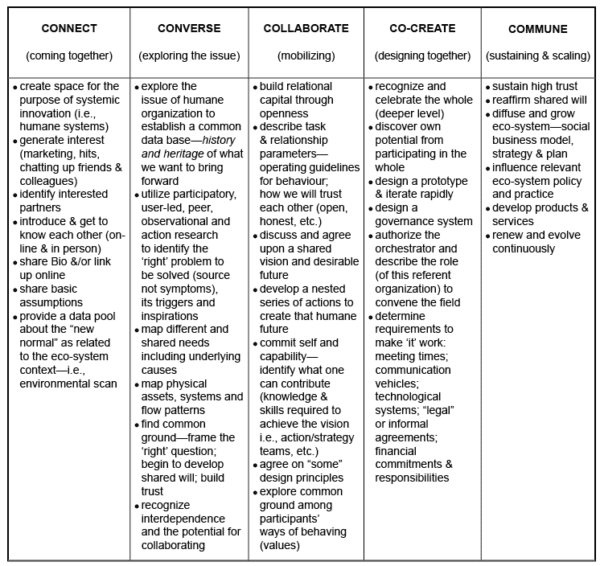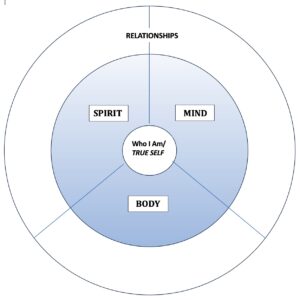Over the past decade, social innovation has emerged as a viable means of creating permanent systems change. Although no singular definition has coalesced from those active in this field, the Centre for Social Innovation settled on “new ideas that resolve existing social, cultural, economic and environmental challenges for the benefit of people and planet.”
The main reason for adopting a social innovation approach to change is our traditional perceptions, behaviours, structures and policies, which gave rise to our current ‘wicked’ challenges (climate change, global disease epidemics and widening inequalities), no longer provide the effective and sustainable outcomes necessary to navigate our experience of the New Normal. Its incredibly complex mix of conditions—environmental, economic, social and individual—are unsolvable by yesterday’s standards of operating. Whether we care to admit this or not, incremental improvements in existing ways of being and doing can no longer solely bring about the outcomes necessary for healthy, prosperous and sustained living. As a necessary condition, we require whole new mindsets, models, products and services “that simultaneously meet social needs and create new social relationships or collaborations.”* As the social collaboration between NESTA (the National Endowment for Science, Technology and the Arts) and The Young Foundation documented, humanity needs to collaboratively and simultaneously ‘learn and do’ if we are to successfully traverse what has clearly become an evolutionary step in the development of people and planet.
In 2004, the Sociotechnical Systems Roundtable (STS-RT) began its own Discovery Process, which led to the same conclusion. If humanity is to solve the immensely complex challenges confronting us, no one firm or even network of firms is likely to succeed alone. What is rapidly becoming obvious around the globe is the requirement for an adaptive systemic approach that considers the ‘issue of concern’ (i.e., humane organization) within its larger ecosystem. The key to success is everyone must become social and technical system designers and openly share their learning and doing in order to stimulate and inspire the right questions and the right solutions. With this intent in mind, my STS-RT colleagues and I created a skeleton prototype of a design process for an issue-based ecosystem. It is illustrated below.
5 C’s Design Process: Ecosystem Prototype (June 2012) **
Even without including the more detailed activities of bringing this design to fruition, you can see its inherent complexity. No doubt several more iterations will emerge before we settle on its key ingredients and steps. Because we are all in this together, please send along your own reactions and considerations so I can include them in the new iterations.
Sources:
*Murray, R., J. Caulier-Grice, & G. Mulgan. 2010. The Open Book of Social Innovation, NESTA & the Young Foundation (www.socialinnovator.info), March.
**Austrom, D., D. DeGuerre, H. Maupin, C. McGee, B. Mohr, J. Norton, & C. Ordowich. 2012. Designing Adaptive Systems for Navigating the New Normal, Socio-Technical Systems Roundtable (Adaptive Enterpise Team), Manuscript in progress.






